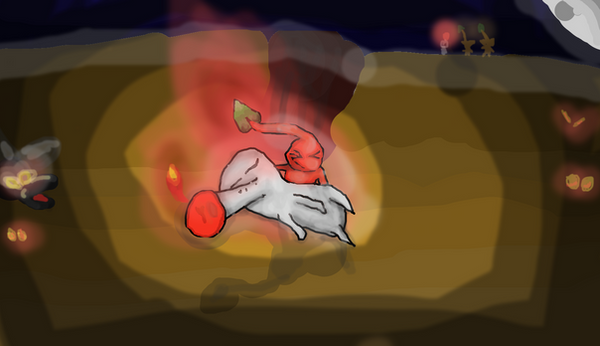HOME | DD
 JinjiTheGengar — The Sandbox Multiplication Method
by-nc-nd
JinjiTheGengar — The Sandbox Multiplication Method
by-nc-nd

#math #mathematics #multiplication #mathematical #maths #method #sandbox #tutorial
Published: 2021-11-03 20:01:36 +0000 UTC; Views: 9290; Favourites: 4; Downloads: 0
Redirect to original
Description
Jinji is a smart Gengar who likes to study in his spare time; and some of his favourite subjects are Science, Maths and Magic. Earlier this week, KittyTheGengarQueen shared a picture showing how she loves maths; which made Jinji happy to hear; and he decided to share one of his favourite things he's learned. Kitty didn't seem to have heard of it, so Jinji thought he'd share it with you all






The Sandbox Method is a way of multiplying two large numbers by breaking them down into a series of smaller sums which add up to the final result. Here's how it works:
- Draw a grid of squares as wide as the number of digits in the first number; and as high as the number of digits in the second.
- Write the numbers you want to multiply around the edges of the grid, one digit per square.
- Split each square down the middle diagonally.
- Now, for each square, multiply the number directly above that square by the number to the right. Write the answer into the square with the "tens" above the diagonal line, and the "units" below it.
- Repeat this until you fill every square.
- Now, working from right to left, follow each diagonal line and add up every number that appears in a square in that line.
- If a line adds up to more than 10, carry the "tens" over and add them to the next line to the left. Repeat as necessary until each line has a single digit answer.
If you've done it all right, the totals spell out the answer to the original sum!
The picture shows how Jinji used this method to solve three tricky sums:
23 x 45 = 1035
345 x 26 = 8970
987 x 654 = 645498
You can actually use this to multiply numbers of any size, as long as you have enough space for the grid - but it gets quite easy to mix up the lines and get the sums wrong the longer numbers you try to work out. It may therefore help to extend the diagonal lines past the grid to help you visualise which numbers need to add up when, just like Jinji did for the bottom grid







This method is a paper recreation of an old mathematics trick supposedly invented by the Hindi culture many centuries ago, which originally used a box of sand to multiply numbers - hence why it's called the "sandbox" method. It's also similar to the Japanese "Stick Multiplication" method, but Jinji and I personally find this way much easier to grasp ^^
Related content
Comments: 10

👍: 1 ⏩: 1

👍: 1 ⏩: 0

👍: 0 ⏩: 1

👍: 0 ⏩: 1

👍: 1 ⏩: 1

👍: 0 ⏩: 1

👍: 0 ⏩: 0

👍: 0 ⏩: 1

👍: 0 ⏩: 1

👍: 1 ⏩: 0



















